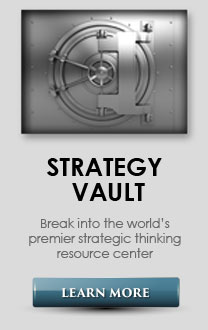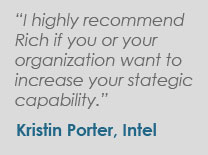
Spring Training for BusinessMajor League Baseball's annual spring training means the welcoming back of warmer weather, the smell of freshly mown grass and another year of the Chicago Cubs not winning the World Series. But WAIT! The Cubs are actually the favorites to win it all this year. Could this actually be the year of Cubaggedon? We'll have to wait and see. Whether it's the Chicago Cubs or your hometown baseball team, every major league player, men making millions of dollars a year, the best in the world, will invest approximately six weeks to refresh on the basic skills of the game. When is the last time your team refreshed on the basics of business strategy? When is the last time your team had a strategy spring training? In the past few years, I've had the honor of visiting with managers at world-class companies including FedEx, Google and Dell to share my perspectives on strategy and developing strategic thinking skills. A common theme I've found in great companies and outstanding leaders is their continual desire to raise their bar of excellence and build on their already strong strategy capabilities. As the snow melts and the trees begin to bloom, this is the perfect opportunity to introduce a strategy spring training to your team. A successful strategy spring training begins with three B's. 1. Basics Strategy is how "generally" you're going to achieve the goals and objectives, maybe something along the lines of "leverage relationships in top 5 accounts regionally with thought-leader experiential learning." The accompanying tactics, or how "specifically" you're going to achieve the goals could include brochures, training binders and web-based blended learning modules. 2. Barometer The tool I developed to help managers gauge the changing pressure points in their business is called the Contextual Radar. To create a Contextual Radar, draw a large circle on a piece of paper. Then draw one line from top to bottom and another from side-to-side so you have a cross in the circle. Label the upper right area "Market," the lower right area "Customers," the lower left area "Competitors," and the upper left area "Company." Next, fill in the four areas with the key happenings or issues occurring in each. The tool provides an excellent means of monitoring the highlights of the business and functions equally well as a way to dialogue on important issues with colleagues. Remember, diagnose the business before prescribing a strategy. 3. The Big Picture One way of bridging that gap is to see the big picture. We often hear strategy described as "THE BIG PICTURE," so why not draw that big picture? We can create a picture of our business on one page by using a tool called the Activity System Map. The Activity System Map identifies our 3-5 strategic themes, the areas where we put most of our resources to create differentiated value for customers and the activities or tactics that support them. First identify the three to five strategic themes, the focal areas for resource allocation that provide differentiated value. Draw large circles to represent these strategic themes. Then attach the tactics supporting these themes with small circles. Review and edit the tactics to ensure your big picture is as clear and compelling as possible. If multi-millionaire Major League Baseball players invest six weeks to practice the basics, it seems a bit ridiculous that we don't even take one or two days a year to refresh our business strategy skills. Most businesses spend 100% of their time playing the game and 0% on practicing to get better. Does your team take a day a quarter to have a strategy spring training and refresh on the basics? Make no mistake, this year you and your team will either get better or you'll get worse. And with the #1 cause of bankruptcy being bad strategy, getting worse takes the umpire's call, "You're Out!" to a whole new level. |








